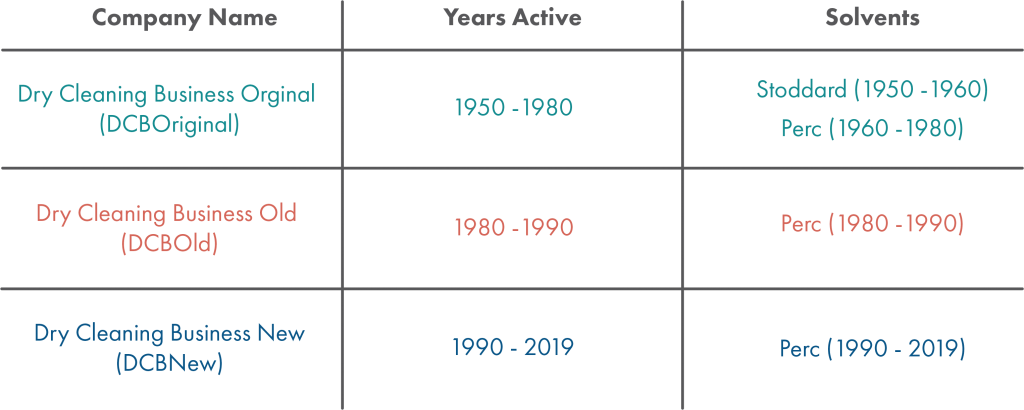ENVIRONMENTAL FORENSICS CAN HELP US DETERMINE WHO IS RESPONSIBLE AND LEGALLY LIABLE FOR A CONTAMINANT RELEASE

BY: JEFF CARNAHAN
In my role as President of an environmental consulting firm, I have the opportunity to meet new people and introduce our company to folks outside of the environmental industry. It’s common to get quizzically raised eyebrows from new acquaintances as I tell them that the name of our company is EnviroForensics. The wheels in their heads start turning and I can see they’re attempting to get a grip on what it is that EnviroForensics does.
The word forensics often takes people’s thoughts immediately to their favorite crime show, or even back to Quincy M.E. Personally, I’m a Quincy guy. The use of forensic science is a major part of these shows, as the crime lab scientists tease out the intricacies of the unobvious, and often microscopic facts that lead them to break the case. Environmental Forensics is pretty similar to that. We use scientific intricacies of the unobvious, and often microscopic facts to solve complex environmental who-dunnits.
DEFINING THE LEGAL LIABILITY
According to Merriam-Webster, the word forensic literally means “relating to or dealing with the application of scientific knowledge to legal problems”. In the world of environmental contamination, those who are responsible, and those who are being blamed, are in a legal situation. The liability that gets assigned by environmental regulators, other affected property owners, and perhaps those that have suffered health effects from contact with contamination is a legal liability. In these civil matters, the primary impact of legal liability is money; money to pay for environmental cleanup, money to offset a reduced value of an impacted property or even money to offset health effects or injuries of exposed people.
The risks are high for potentially responsible businesses, which is why a good environmental attorney is necessary for almost every contamination issue. This is also why a good environmental consultant with specific skills and expertise in environmental forensic science, such as subsurface investigation and cleanup, is crucial if you find yourself in the cross-hairs of an environmental contamination problem. So, how do you solve this problem?
ENVIRONMENTAL FORENSICS CAN SOLVE THE CASE
Let’s set up an example of a typical scenario, in which a dry cleaner has been identified as a potentially responsible party (PRP) for an environmental contamination issue. Then we can walk through a few ways that environmental forensics will help answer the key questions of the case.
Let’s say that Dry Cleaning Business New (DCBNew) currently owns a property, which they purchased from Dry Cleaning Business Old (DCBOld) in 1990. DCBOld had acquired the property from Dry Cleaning Business Original (DCBOriginal) back in 1980, who had been operating at that same location since 1950.
Let’s also say that DCBNew and DCBOld used Perc as a primary solvent during their entire operation. DCBOriginal used Stoddard hydrocarbon as a primary solvent for ten years, then switched to a Perc machine for the duration of the time they owned the property. Here’s the operational timeline for the example scenario outlined above:

THE DRY CLEANER INVESTIGATION BEGINS
Now let’s add some legal liability to this scenario. We’ll say that the owner of a commercial property next door to the dry cleaning business was trying to sell their land, and through their real estate due diligence Phase I and II Environmental Site Assessment, it was discovered that the groundwater beneath their property is impacted with Perc. Immediately, the owner of the adjacent property filed a lawsuit against DCBNew and demanded financial compensation for decreased property value. On top of all this, the state regulatory agency was notified, who has now sent a letter to DCBNew stating that they must investigate and clean up whatever is found, as well as the neighboring property. This is the point where stress starts to run high for DCBNew, and rightfully so because they are now charting into unfamiliar territory with previously unknown legal liability and are under a timeline to meet the investigation and cleanup demands set forth by the state regulatory agency.
If DCBNew had been the only operator at the property ever, it would be pretty clear that they may be the sole responsible party. However, we know that there were two previous dry cleaners, DCBOld and DCBOriginal, who used Perc at the property, and they may bear some responsibility as well.
The first forensic analysis of this situation can be performed without much science at all. An understanding of the history of the dry cleaning industry gives a lot of valuable insight about who is most likely to have contributed the most to the subsurface contamination at the property. Generally speaking, it is more likely that significant releases of Perc would have happened during earlier dry cleaning operations. This is due to three main factors:
- The dry cleaning process and equipment improved over the years and less Perc was lost;
- The environmental regulations increased over the years that required operators to manage their process more stringently; and
- There has been an increasing level of understanding of the environmental hazards associated with Perc usage.
All of these resulted in an overall decreasing trend in new Perc contamination.
The time period when DCBOriginal operated at the property from 1950-1980 corresponds to the First Generation transfer dry cleaning machine process. This process involved a tank of solvent that was used to fill the washing machine and afterward the clothes were physically transferred to the drying process. The First Generation process provided plenty of opportunities for Perc to be spilled or dripped onto the floor and into the ground. It is also possible, however, that DCBOriginal may not have used a transfer machine. This is the type of evidence that comes to light throughout the environmental forensics investigation.
In the example scenario, DCBOriginal also used Stoddard for 10 years (1950-1960), and then switched to Perc. They would have had to buy a new machine around 1960, which was the early days of the Second Generation dry to dry machines. Dry cleaning that used dry to dry machines was a much tighter process, but there were still lots of releases of Perc from the solvent recovery and waste handling procedures.
LEGAL LIABILITY TAKES SHAPE
The example scenario walks through the operational timeline of the dry cleaning businesses to better understand the factors that can affect the outcomes of the environmental contamination case. If DCBOriginal from 1950-1980 released more Perc at the site than DCBOld from 1980-1990, then DCBNew needs to be proactive with this issue and work with their experienced legal and environmental teams to make sure that these former businesses take on as much of the financial and legal burden as they deserve.
ENVIRONMENTAL EVIDENCE COMES TO LIGHT
Through the use of geological and chemical calculations and measurements, forensic scientists are able to read the site conditions and start to tell when and where the contamination may have originated. When the scientific information is coupled with an understanding of the history of site operations, such as the locations of all former operators’ dry cleaning machines, then the details of environmental releases at the property really start to reveal themselves. This helps create a defensible picture that includes how much contamination was contributed, by which past operator, and how the cleanup costs should be allocated to the responsible parties.
In the example scenario, DCBNew should be cautious about simply blaming all the former operators at the property because they very well may have contributed to the contamination. Even if the dry cleaning business started operating in the 1990s with a Fourth Generation machine, it’s possible that there may have been Perc releases. I’ve seen plenty of cases where a Perc release was found beneath a dry cleaning business and the operation had only been there for two years. Machine maintenance, waste Perc handling practices, contact water handling methods, filter disposal and even spotting procedures are all areas that could cause potential problems.
WHAT CAN A DRY CLEANER DO?
When a dry cleaner finds themselves staring in the face of an environmental contamination problem, stress can run high. There is a lot at stake. If there are former dry cleaning businesses that operated at the same location, there is a good chance they can be invited as a responsible party.
Ultimately, remember that this is a legal situation. Expert attorneys and scientists should be involved to help navigate the situation. The good news is that if you are able to find old commercial general liability (CGL) insurance policies, there could be assets to pay for an expert attorney and an environmental forensic scientist of your choice, also known as, an environmental consultant.
If you’re facing an environmental contamination issue, we’ll help define your next steps with a confidential consultation.
As seen in Cleaner & Launderer
 Jeff Carnahan, LPG, has 20+ years of environmental consulting and remediation experience. His technical expertise focuses on the investigation and interpretation of subsurface releases of hazardous substances for the purpose of evaluating and controlling the risk and cost implications. He has focused on being a partner with the dry cleaning industry for the past decade, and he’s a frequent contributor to the national dry cleaning publication Cleaner & Launderer. He is an industry leader in understanding that environmental risk includes not only cleanup costs, but also known and unknown third-party liability.
Jeff Carnahan, LPG, has 20+ years of environmental consulting and remediation experience. His technical expertise focuses on the investigation and interpretation of subsurface releases of hazardous substances for the purpose of evaluating and controlling the risk and cost implications. He has focused on being a partner with the dry cleaning industry for the past decade, and he’s a frequent contributor to the national dry cleaning publication Cleaner & Launderer. He is an industry leader in understanding that environmental risk includes not only cleanup costs, but also known and unknown third-party liability.



